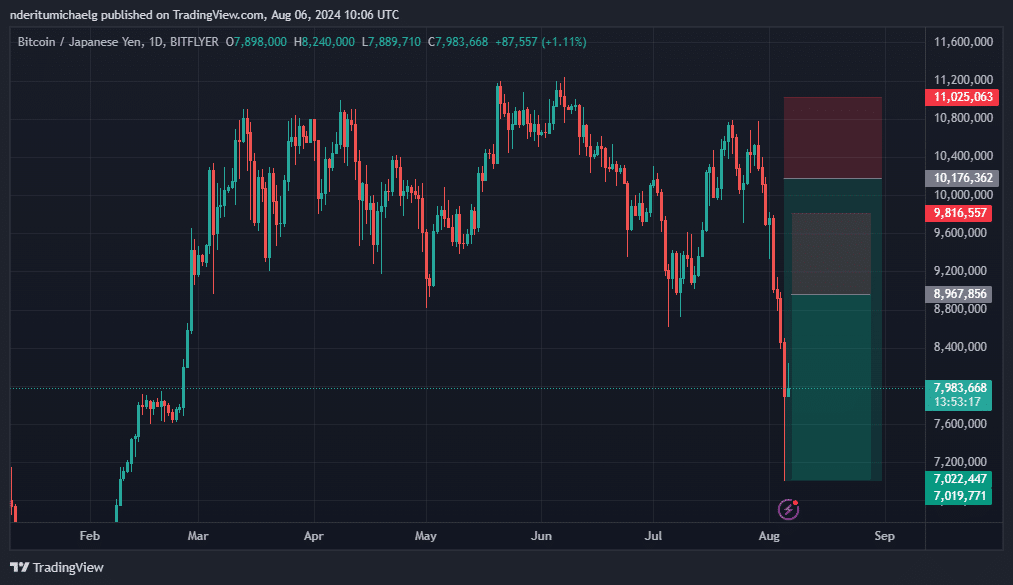- Overleveraged traders engaged in JPY carry trading may have owned the Bitcoin cookie jar.
- Direct and indirect exposure affected crypto performance as BOJ raised rates.
The Bitcoin Tsunami [BTC] the selling pressure, which started last week and spilled over into the August 5 trading session, appears to have run its course.
The markets have shown a slight recovery over the past 24 hours.
The fact that the crash wasn’t limited to Bitcoin and crypto left many wondering what the heck was going on.
Many analysts observing the situation have come up with answers to explain the widespread sell-off across multiple markets. There is one plausible explanation making the rounds on the internet that is worth considering.
A carry trade on the Japanese Yen
A carry trade describes a scenario in which investors borrow a currency that attracts low interest rates, exchange it for a currency with a higher interest rate and purchase assets.
The Bank of Japan has made headlines in recent months for its changes in economic policy. This includes a shift from negative to positive rates.
More recently, on July 31, the BOJ announced a 0.25% interest rate hike. This supported the value of the Japanese Yen against the US dollar.
As a result, highly indebted investors who engaged in a carry trade in the JPY were forced to liquidate their assets to pay off their loans.
Was Bitcoin Exposed to the JPY Carry Trade?
It is possible that some investors who engaged in the carry trade were directly exposed to Bitcoin.
These are individuals and institutions who saw an opportunity to secure low-interest loans and invest in high-yield assets. Bitcoin could be one of them.
Analysts suggest that widespread exposure across multiple sectors could explain why there was heavy selling across asset classes.
The subsequent fallout from the BOJ rate hike may also have resulted in secondary exposure to cryptocurrencies. Short sellers waited for such an opportunity to take advantage of the downside potential.
The FUD from the sell-off provided more fuel for the bears. Bitcoin has fallen as much as 31% against the Japanese Yen since July 31. The decline against the US dollar was slightly lower at 25%.


Source: TradingView
The same reasons for the recent result also underline a possible slow recovery. Nevertheless, the dip can also be seen as a potential buying opportunity.
That doesn’t necessarily indicate that BTC and crypto in general are out of the woods yet.
Read Bitcoin’s [BTC] Price forecast 2024-25
Bitcoin faced multiple bullish news that supported the bulls or bullish optimism in July. Another negative news event could expose crypto to even more downsides in the coming weeks.
Therefore, this uncertainty highlights a possible reason why Bitcoin’s recovery could be slower than expected before FOMO floods in again.

